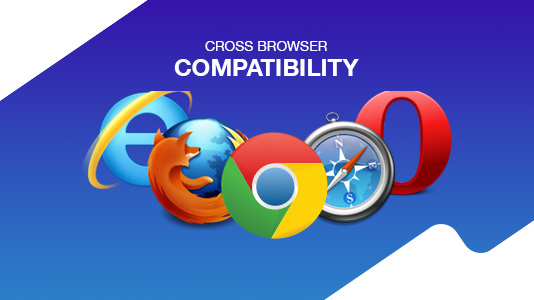Blitz News Digest
Stay updated with the latest trends and insights.
Cross-Browser Compatibility: The Silent Battle of Web Design
Uncover the hidden challenges of cross-browser compatibility in web design and learn how to conquer them for a flawless user experience!
Why Cross-Browser Compatibility Matters for Modern Web Design
Cross-browser compatibility is a vital aspect of modern web design that ensures a website functions seamlessly across various web browsers, including Chrome, Firefox, Safari, and Edge. In today’s diverse digital landscape, users access websites using different devices and browsers, making it crucial for designers to create sites that provide a consistent experience. When a site displays properly in one browser but not in another, it can lead to user frustration, high bounce rates, and ultimately lost business opportunities. Therefore, prioritizing cross-browser compatibility not only enhances user satisfaction but also strengthens your brand's reputation and reach.
Moreover, ensuring your website is cross-browser compatible can significantly impact your search engine optimization (SEO) efforts. Search engines like Google favor websites that offer excellent user experiences; thus, a site that appears broken or unusable on particular browsers may see a decline in its ranking. Additionally, modern web design trends increasingly emphasize responsive and adaptive layouts that cater to a wide audience. By investing in cross-browser compatibility, you create a more inclusive web experience that can attract and retain a broader audience, ultimately leading to improved engagement and conversion rates.

Top 10 Tips to Ensure Your Website Works Seamlessly Across All Browsers
Ensuring that your website works seamlessly across all browsers is crucial for providing an optimal user experience. Here are the top 10 tips to achieve this goal:
- Use responsive design techniques to accommodate varying screen sizes and resolutions.
- Test your website on all major browsers, including Chrome, Firefox, Safari, and Edge.
- Implement CSS resets to reduce browser inconsistencies in default styling.
- Leverage progressive enhancement to ensure that the core content is accessible to all users, regardless of their browser capabilities.
- Utilize autoprefixing tools to add necessary vendor prefixes to your CSS for better compatibility.
In addition to the initial tips, focusing on performance and compatibility can further enhance your website's functionality. Consider these additional strategies:
- Minimize the use of JavaScript libraries that may not be supported across all browsers.
- Regularly update your website's codebase to comply with current web standards.
- Use feature detection libraries like Modernizr to check for browser support and provide fallbacks if necessary.
- Monitor user analytics to identify browsers that your audience uses most frequently and optimize accordingly.
- Finally, keep your website content and design simple, eliminating unnecessary complexities that may not render well in less common browsers.
Common Cross-Browser Issues and How to Troubleshoot Them
When developing a website, common cross-browser issues can arise due to the distinct ways various browsers interpret HTML, CSS, and JavaScript. For example, discrepancies in how browsers handle CSS properties can lead to inconsistent layouts. To identify these issues, developers should conduct regular testing across different browsers such as Chrome, Firefox, Safari, and Edge. Utilizing developer tools built into each browser can help spot rendering differences and debug issues effectively.
Another frequent challenge is the lack of support for certain features in older browser versions. Browser compatibility issues may result in broken functionality or visual discrepancies. To troubleshoot these problems, developers can implement feature detection tools like Modernizr and utilize CSS resets to create a more consistent baseline. Additionally, incorporating polyfills can provide backward compatibility for newer JavaScript features, ensuring a smoother user experience across all platforms.